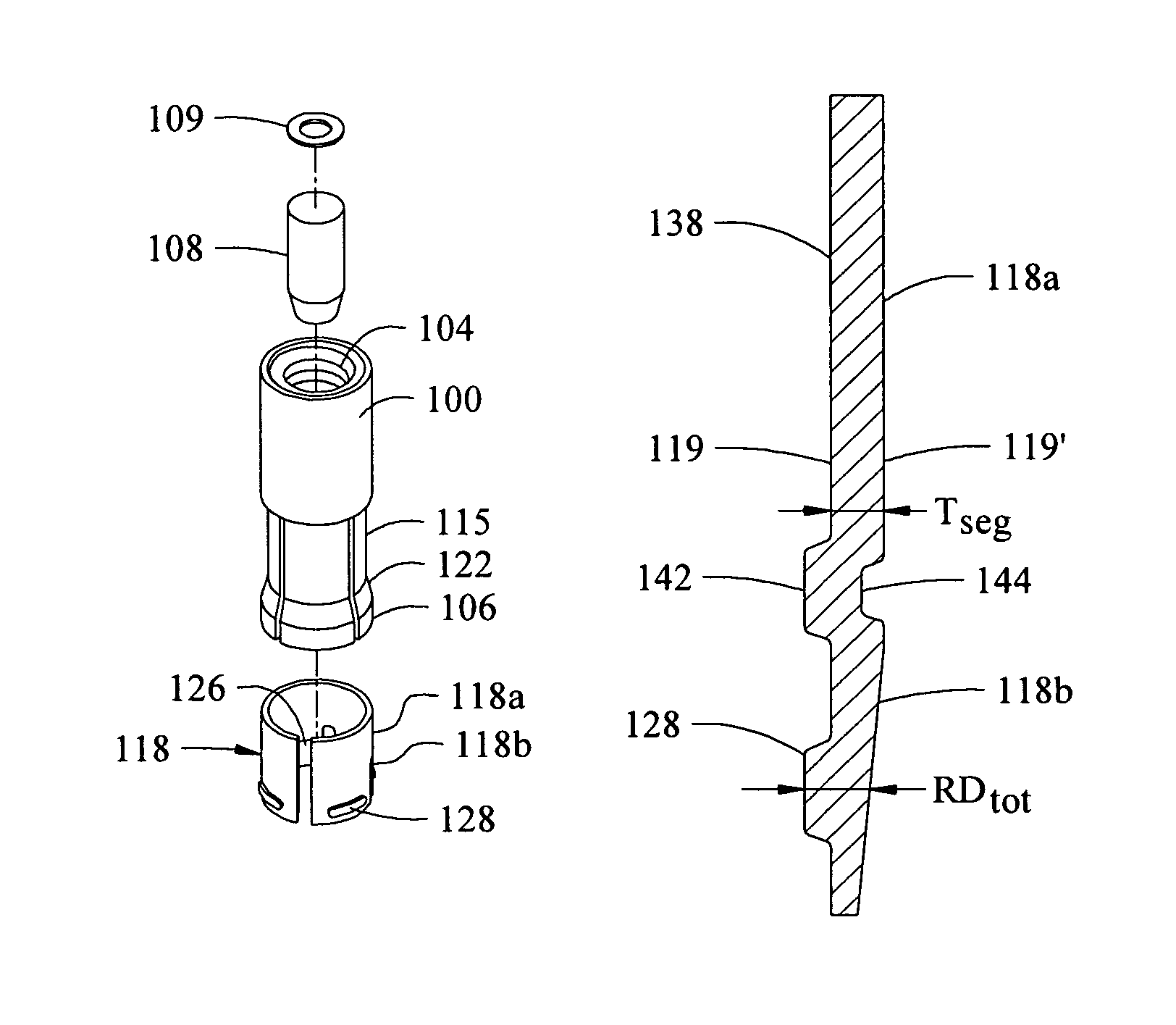Wedge-type drop-in anchor assembly
a drop-in anchor and assembly technology, applied in the field of anchors, can solve the problems of reducing the wedging of the distal ends against the hole walls, collapsing or bending, and reducing the wedging of the distal ends
- Summary
- Abstract
- Description
- Claims
- Application Information
AI Technical Summary
Benefits of technology
Problems solved by technology
Method used
Image
Examples
Embodiment Construction
[0064]Referring to the drawings, an embodiment of anchor assembly of the invention is generally designated A. For convenience, the anchor assembly may be referred to, throughout this document, as an anchor. It is a hybrid, in the sense that it is a hybrid drop-in anchor provided with an anchoring sleeve.
[0065]With reference initially to FIGS. 1-4, the general anchor features are first considered. The anchor has a body 100 that has a through bore 102 having internal threading 104. A split base region 106 has inserted into its central bore a tapered approximately bullet- or conical-shaped setting plug 108, held in place during shipment and storage by a thin wafer 109, as of resilient synthetic material. The plug is capable of being driven baseward by setting tool 110 (FIG. 5) as by a hammer 112 for preliminary setting when the anchor is inserted, base end first, into a borehole. Such a hole is shown at 114 in FIG. 5 and in other figures. A threaded male member such as a bolt 116, or a...
PUM
 Login to View More
Login to View More Abstract
Description
Claims
Application Information
 Login to View More
Login to View More - R&D
- Intellectual Property
- Life Sciences
- Materials
- Tech Scout
- Unparalleled Data Quality
- Higher Quality Content
- 60% Fewer Hallucinations
Browse by: Latest US Patents, China's latest patents, Technical Efficacy Thesaurus, Application Domain, Technology Topic, Popular Technical Reports.
© 2025 PatSnap. All rights reserved.Legal|Privacy policy|Modern Slavery Act Transparency Statement|Sitemap|About US| Contact US: help@patsnap.com



